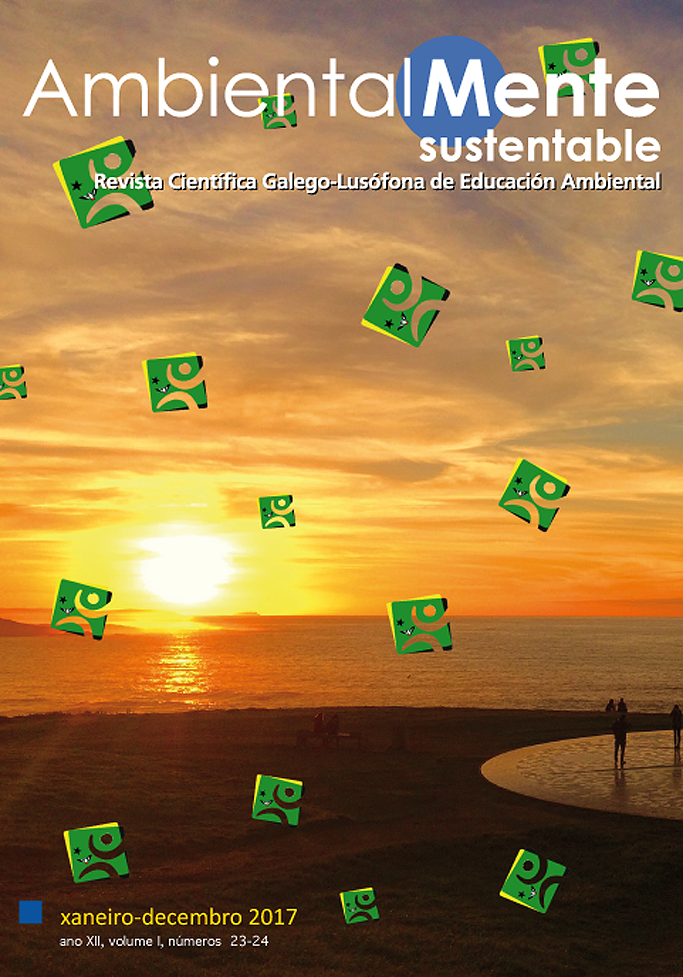Look up: how to sensitize public managers to biodiversity conservation
Main Article Content
Abstract
The environmental team of the National Institute of Metrology, Quality and Technology, in Brazil, is challenged to turn the institution aware of the importance of biodiversity conservation when it realizes that its management doesn’t prioritize the minimizing the negative impacts of its operations on the environment. It happens that its Laboratory Campus is just at the meeting of three conservation units and promotes the connectivity between remnants of the Atlantic Forest, in the fragmented periurban landscape of Rio de Janeiro outskirts. Thus, issues such as waste disposal, effluents treatment and external areas maintenance can not be neglected and should include the recovery of degraded protected areas along riverbanks and on slopes. In order to gain space in the internal media, and in the institutional agenda, the team promotes plantations, trails and lectures, open to employees, but aimed at making managers aware of legislation compliance. With the dissemination of the event and its results, it reaches everyone, below and above in the institutional hierarchy. This way, it is expected that managers will be more committed to environmental issues. This paper presents an overview of Environmental Education in Inmetro, discusses alternatives to consolidated practices and assesses its application, allowing for its future improvement.
Keywords:
Downloads
Article Details
References
ABNT - Associação Brasileira de Normas Técnicas. (2015). NBR ISO 14001:2015 Sistemas de gestão ambiental - Requisitos com orientações para uso. Rio de Janeiro: ABNT.
Brasil. Decreto nº 8.972, de 23 de janeiro de 2017. Institui a Política Nacional de Recuperação da Vegetação Nativa.
Brasil. Lei 12.651, de 25 de maio de 2012. Dispõe sobre a proteção da vegetação nativa; altera as Leis nos 6.938, de 31 de agosto de 1981, 9.393, de 19 de dezembro de 1996, e 11.428, de 22 de dezembro de 2006; revoga as Leis nos 4.771, de 15 de setembro de 1965, e 7.754, de 14 de abril de 1989, e a Medida Provisória no 2.166-67, de 24 de agosto de 2001; e dá outras providências.
Brasil. Lei 12.305, de 2 de agosto de 2010. Institui a Política Nacional de Resíduos Sólidos; altera a Lei no 9.605, de 12 de fevereiro de 1998; e dá outras providências.
Brasil. Lei nº 6.938, de 31 de agosto de 1981. Dispõe sobre a Política Nacional do Meio Ambiente, seus fins e mecanismos de formulação e aplicação, e dá outras providências.
Hungerford, Harold R. (2010). Environmental Education (EE) for the 21st century: Where have we been? Where are we now? Where are we headed? The Journal of Environmental Education, v. 41, n. 1, pp. 1-6.
INMETRO. (2017). As Aves do Campus. Publicação digital. Disponível em http://www.youblisher.com/p/1829402-As-Aves-do-Campus
Loureiro, Carlos Frederico Bernardo (2011). Educação ambiental e movimentos sociais na construção da cidadania ecológica e planetária, em Baeta, Anna Maria Bianchini et al., Educação Ambiental: repensando o espaço da cidadania. pp.73-103. São Paulo: Cortez.
Sauvé, Lucie (2005). Uma cartografia das correntes em educação ambiental, em Sato, Michèle e Carvalho, Isabel Cristina Moura, Educação Ambiental: pesquisa e desafios. pp.17-44. Porto Alegre: Artmed.
Short, Philip C. (2010). Responsible environmental action: Its role and status in environmental education and environmental quality. The Journal of Environmental Education, v. 41, n. 1, pp. 7-21.



